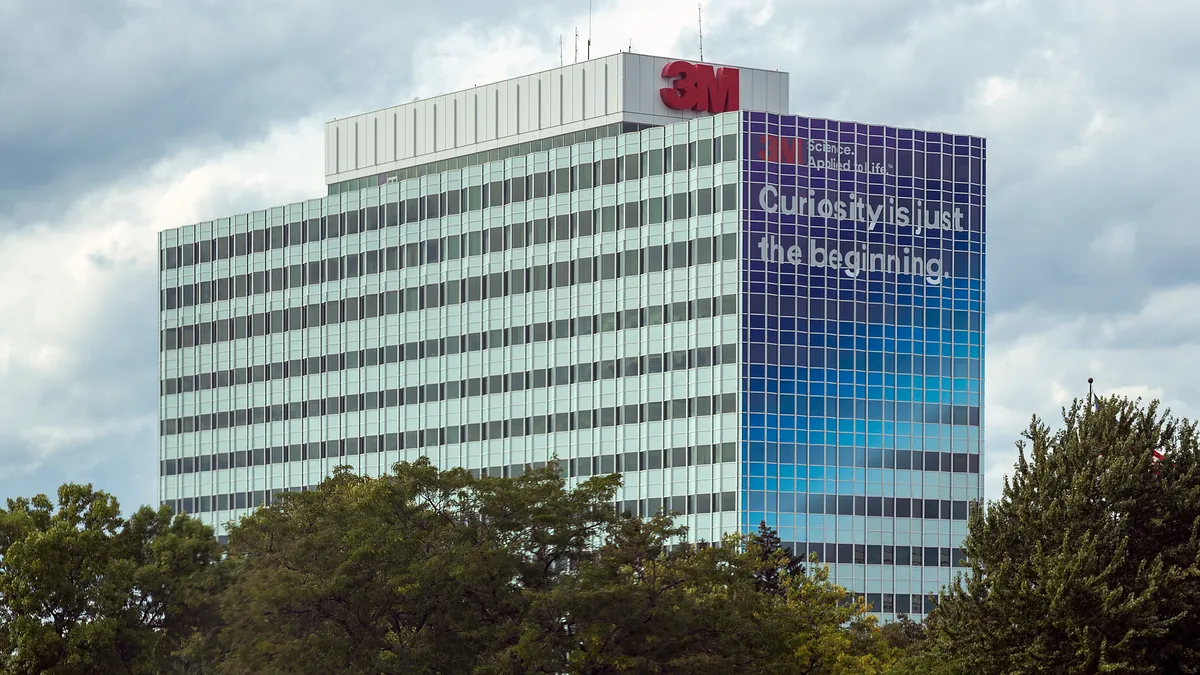Dive Brief:
- 3M plans to spin off its healthcare business Solventum on April 1, the conglomerate said Wednesday.
- The company shared the date, which narrows its earlier target of the first half of 2024, alongside a registration statement that describes Solventum and the risks it could face as an independent firm.
- 3M expects Solventum’s adoption of its own information technology systems to be “expensive and time consuming.” Transitioning away from 3M systems could cause “temporary interruptions in business operations” and “create risks to Solventum’s relationships with customers.”
Dive Insight:
3M disclosed plans to spin off its healthcare operation in July 2022. The company initially aimed to complete the process by the end of 2023, but the separation has taken longer than anticipated.
In preparation for the spinoff, 3M has published a form to register securities for potential trading on a U.S. stock exchange. The U.S. Securities and Exchange Commission form is intended to help people make decisions about whether to invest in Solventum and, as such, it provides the closest look to date at the standalone business and the challenges it may face.
The healthcare business had total sales of $8.2 billion and net income of $1.35 billion in 2023, according to the filing, with similar marks in 2022 and 2021.
Solventum, which will include about 22,000 employees, will feature four businesses. Medsurg is the largest unit, with its portfolio of devices in wound care, intravenous site management and other areas accounting for 56% of total sales last year. Dental solutions, health information systems, and purification and filtration each accounted for 12% to 16% of total sales.
3M believes Solventum will benefit from aging populations, the optimization of care workflows, rising use of digital technology, the shift from hospitals to ambulatory surgery centers and increasing demand for personalized care. The company sees health information systems as the fastest growing area, with a 6% to 8% growth rate forecast through 2026, and medsurg the slowest at 3% to 5%.
Solventum’s ability to match or exceed the growth rates of its end markets will depend, in part, on how it manages challenges that 3M believes it may face as a standalone company. As part of 3M, the healthcare unit has benefited from “economies of scope and scale in costs, employees, vendor relationships and customer relationships,” the company said.
The healthcare unit relies on 3M for R&D support, information technology infrastructure and systems, and accounting and reporting systems. Solventum will create its own systems or engage third parties but the transition “could be disruptive” and hurt profitability, 3M said. As 3M moves contracts to Solventum, some partners may seek “more favorable contractual terms” such as price increases.
3M’s filing also covers potential liabilities related to PFAS, also known as “forever chemicals,” which can be used in some medical devices such as surgical sutures and wound dressings. Animal studies suggest the chemicals, which do not break down in the environment, may affect reproduction, thyroid function, the immune system and injure the liver. 3M is exiting PFAS production by the end of 2025 and will defend Solventum against “certain liabilities” linked to the chemicals.
However, Solventum could still face liabilities related to PFAS. Solventum will “generally be responsible for” PFAS-related liabilities linked to healthcare business conducted “at or after the separation.” There is a chance Solventum will continue to use PFAS from other suppliers after 3M stops production.
After 2025, the 3M indemnification will not apply to sales of Solventum products that contain PFAS.
In July, 3M agreed to a $10.3 billion settlement over allegations it contaminated public water supplies in the U.S. with PFAS.











